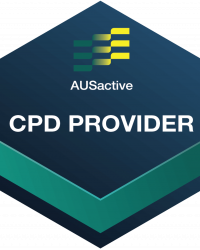Wunda Chair Repertoire
Strength:
Abdominal Work: Side Pull Up
Alternate Names
Side Pike
Derived From
Mat Pilates: Roll Up
Primary Element
Strength
To create and develop abdominal strength including deep transversus abdominis and the spinal flexors rectus abdominis.
Secondary Element
Mobility
To further develop thoracic and lumbar spinal mobility.
Tertiary Element
Stability
To create and develop inverted and rotated torso stabilisation.
Repetitions
4-6
Apparatus Setup
Suggested springs
- Exo Chair by Balanced Body
- Cactus style number system
- Two springs on setting 2
- Cactus style number system
- Resistance: medium
Scan the apparatus once the client is moving for correct set up (Clain Pilates, 2002)
- Pedal position first – check the dowl is secure if split pedal
- Springs second
- Handles or small apparatus such a ball or Magic Circle last
Place foam matting or a pad over the base of the Wunda Chair underneath the pedal to stop the pedal ‘crashing’
Plane of Motion
Transverse
Targeted Muscles
The abdominals including the rectus abdominis on the forward flexion of the spine, the abdominal internal and external obliques on the torso rotation and the deeper layer of transversus abdominis to assist in pelvis stability and engagement to help lift the pedal and take off.
The spinal extensors such as the erector spinae which include the longissimus, iliocostalis, and spinalis muscles.
Warnings
Not suitable for some spine, shoulder, wrist issues, where flexion or rotation is contraindicated or where the client is unable to weight bear into their wrists or shoulder or work in a pain free range of motion.
Execution
Start facing side on to the Wunda Chair and step the inside foot onto the front of the pedal lengthways, pressing the pedal down to the base. Place the hands onto the seat at the front and back corners so the arms are effectively facing inwards. Step the outside foot behind the inside foot so both feet are lenthways on the pedal.
Lean forwards so the shoulders are over the wrists, with the ribcage rotated and slightly more weight into the back shoulder and upper arm. Lengthen the spine downwards.
Exhale and draw the abdominals in and up and aim to lift the pelvis higher, floating the pedal off the ground and dropping the head. Control the lift and lower movement for the intended repetitions before returning with control to the start position.
Turn outwards to sit the bottom onto the chair, then swivel the feet to point in the opposite direction, transitioning to the other side.
Observations
Do a body scan of the client taking note of the following points
- Pelvis
- Can the client keep the pelvis tucked posterior and lift straight upwards
- Can the client keep the focus on the abdominal obliques and transversus abdominis engagement to lift (or levitate) the pedal up?
- Legs
- Can the client keep the legs still throughout?
- Is the client ‘bunny-hopping’ up? Or bending their knees and jumping to lift the pedal? Try to encourage controlled movements to lift from the abdominals
- Feet
- Can the back foot stay anchored down throughout?
- Apparatus
- Is there tension on the springs the whole time? Or is the pedal crashing to the base of the Wunda Chair indicating a lack of control and a push by the client beyond their ideal range of motion? If the pedal is crashing at the bottom it is likely the spring setting is too light, or more control is needed.
- Ensure the Wunda Chair is pushed close to a wall or is placed on grip mats or padding so it does not move thorughout the exercise
Learning Style Technique Cues
Auditory – word associations that connect mind and body
- It’s easy to ‘ride the springs’ up and down so be minful to not shift the weight forward and back. As the pedal lifts reach down into the pedal and up with the abdominals, as the pedal lowers keep the control from the abdominals
- Say the client’s name when you’re about to interact with them
Visual
- Imagine the pedal levitating or floating up, the inside waist drawing closed and the head lowering simultaneously
- You may demonstrate a part of the movement as a visual representation for the client to see
Kinaesthetic
- Press the balls of the feet into the pedal to assist with connecting into the transversis abdominis before lifting the pedal
- Lean slightly forward and across into the back shoulder and upper arm, create stability through the shoulder girdle and drop the head to assist wtih the pedal lifting
- As the Instructor, stand to the side or in front of the client’s back shoulder placing a hand near their shoulder so as to ensure they don’t lean to far forward over the back corner of the Wunda Chair
Modifications and Variations
Regress the exercise by
- Increasing the spring setting to allow for more support from the apparatus
- Reduce repetitions and/or pace
- Reducing the range of motion so the client can focus on pelvis stability, and rotation from thoracic
- Woking on Mat Pilates: Roll Up
- Working on Wunda Chair Abdominal Work: Pull Up
- Working on Wunda Chair Spinal Mobility: Seated Spine Twist
Progress the exercise by
- Decreasing the spring settings to create more challenge for the abdominals and less support from the apparatus
- Keeping the outside leg lifted and abducted beside the pelvis (kicked out laterally), or supported by a fit ball to create a single leg variation
- Working towards Wunda Chair Lateral Series: Side Flexion with Twist Teaser
Series and Transitions
This exercise is part of the Abdominal series which also has options to work back into the Washer Woman Wunda Chair exercises or the Mat Pilates Roll Up and its progressions. It can also be used to prepare for the more challenging Side Flexion with Twist Teaser.

